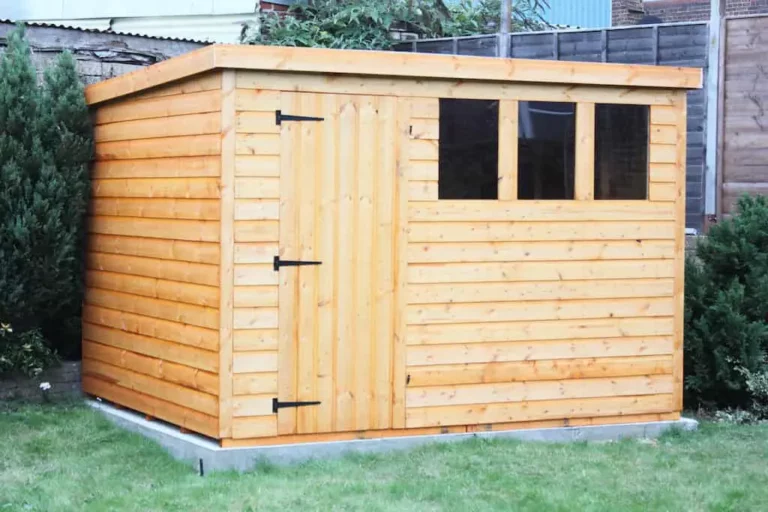Deck Stain Won’t Dry? Here’s What to Do

Staining a deck is a lot of work. After going through all the effort, you want the deck to dry so you can use it. Otherwise, you have a beautiful deck that you can’t use.
If your deck stain won’t dry, it could be because you used too much stain or the wood had too much moisture. Stain soaks into the wood, but the stain won’t soak if the wood contains too much moisture. In most situations, you will have to clean the deck and stain it again.
Your deck is a place to relax and entertain; it is also a significant investment, and you want to maintain it properly. If the stain does not dry, your deck might be nice to look at, but it will be unusable. Read on to find out why your stain might not be drying and what can be done about it.
You Used Too Much Stain
Some people confuse how paint and stain interact with wood, but the difference is important. Paint provides a coat over the wood’s surface. If you add a second coat, it lies on top of the first.
Stain, however, soaks into the wood. While you can always add another layer, wood can only soak up so much stain.

Clean the Excess Stain
If you realize you over-stained your deck, you need to clean off the excess stain.
This is an easy but time-consuming task if you do it within a day or two of realizing you overdid it. You will need lint-free rags and mineral spirits or paint thinner.
To clean the excess stain:
- Soak the rag in mineral spirits and apply it over the areas that have too much stain.
- Begin using light pressure while you clean, adding more pressure if needed to remove the excess stain.
- When you have removed the excess stain, let the wood dry.
- Do not be tempted to add stain to areas with lighter spots. That area has likely already absorbed all it can.
Unfortunately, if you realize several days later that you applied excess stain, you will need to clean the deck and redo it.
- Power wash the deck.
- Sand lightly if needed.
- Use a TSP cleaner.
- Let the wood dry.
- Stain again, wiping off excess stain.
Pro Tip: If you use back brushstrokes when you stain, you add a second coat of stain. Using too much stain is one of the most common reasons that your deck has sticky areas. Another common reason is related to excess stain, except now we are talking about water.
Your Boards Were Too Cold or Wet
Staining your deck when the temperature is above 90°F (32.2°C) will result in uneven penetration of the stain as some of it dries too quickly. But that’s a different problem.
If your boards are cold, the curing time will be longer. And if temperatures drop below freezing, the curing process will be compromised. The stain may not adhere well as the moisture in the wood expanded as it froze.
A more frequent reason stain does not dry is due to new pressure-treated wood has too much moisture. A common mistake is to think that once pressure-treated wood feels dry to the touch, it is ready to be stained.
That might not be true. Just because it is dry to the touch doesn’t mean its moisture content is below 15%. How long that will take depends on several variables, including the wood you bought.
- “Wet treated wood” has far too much moisture when you buy it, and the wait time is longer than other kinds of wood that has been pressure-treated.
- Pressure-treated wood with a water repellent absorbs an oil-based stain better than a water-based one.
- Kiln-dried wood can be used immediately. Look for lumber labeled ADAT or KDAT.
These two tests for excess moisture are easy to perform:
- The bead test. Drip a small amount of water on the wood. If it beads, then the wood has too much moisture.
- The nail test. Press the head of a nail into the wood. Water seeping out around the nail as it is pressed into the wood signals that the wood needs to dry further.
You might want to invest in a moisture meter, especially if you need to redo the deck. Moisture meters, such as the Tavool Moisture Meter, can be used to measure the dampness of firewood and help you determine if there is too much moisture in your walls.
The Stain Was Not Thoroughly Mixed
Solvents, drying agents, pigments, and oil can separate, with the oil floating to the surface. If the stain was not mixed, then the oil won’t dry as well.
Sometimes stains are mixed well when you buy it. It can also happen that you mix the stain and are later interrupted in the middle of the task. Mix the stain frequently to keep the solvents and drying agents from separating from the oil.
The Stain and Wood Are Incompatible
In most cases, choosing the stain depends on your deck stain and the results you are after. For example, if your deck has a light stain, you can apply a darker stain or keep its color. To lighten a dark stain, you should use a lighter solid stain.
If the stain is semi-transparent, you can use another semi-transparent or a solid one. However, solid stain needs to be covered with another solid one. The semi-transparent stain is designed to bind with wood, not a solid surface.
You Needed to Do More Preparation
Sometimes in our hurry to finish the project and be able to use the deck, we rush through the preparation steps. Doing so can lead to several problems as you stain the deck, and one of those is a deck stain that will not dry properly.
Determine the Status of the Wood
You need to know what you are working with. Some problems are simple enough, while others will require more preparation work from you.
- Peeling wood: If the previous stain is pulling away from the wood’s substrate, those areas need to be sanded or scraped off. The tape test, where you press tape on the surface, pull it off and examine it. Loose stain or wood fibers indicate a problem–the wood could have excess moisture. A lack of proper maintenance or exposure to extreme weather also contributes to peeling or decaying wood.
- Weathered wood: Depending on the wood’s condition underneath the surface, you might be able to use the wood, but first, you need to remove the weathered wood from the surface.
- Mold and mildew: Mold and mildew are often confused with dirt. If the darker stains are embedded in the wood, you are dealing with mildew or mold. Not only can mildew damage wood, but it can also be a safety hazard when the deck is wet.
Clean the Wood
Cleaning new wood is relatively straightforward. Use a pressure washer to knock loose dirt or residue. A low-pressure setting should be all you need.
It is safe to use a pressure washer on wood that has been pressure-treated. Softwoods like pine are more susceptible to damage, so use a low-pressure nozzle and follow the manufacturer’s recommendations for which nozzle and settings to utilize.
Go along the wood’s grain as you clean. Also, work quickly and not saturate the wood since you will need it to dry before you stain.
Either rent a pressure washer or buy one such as the Greenworks 1700 PSI Pressure Washer. It is a quiet unit that can be used either vertically or horizontally and comes with needed accessories.
Another option is to use a fireman’s style hose nozzle, such as the Dradco Brass Fireman Nozzle. It will give you a less dangerous but still intense spray.
Bottom Line
Staining a deck involves a lot of waiting. Wait for the weather to be warm enough, wait for a sunny day, wait for it to stop raining, and so on. So when you finish, you want to be done waiting. Hopefully, the problem is that you put on too much stain. That is usually the easiest to fix. If not, there’s a chance you will have to redo the deck.
If that’s the case, use the tips provided to get the job done right.





